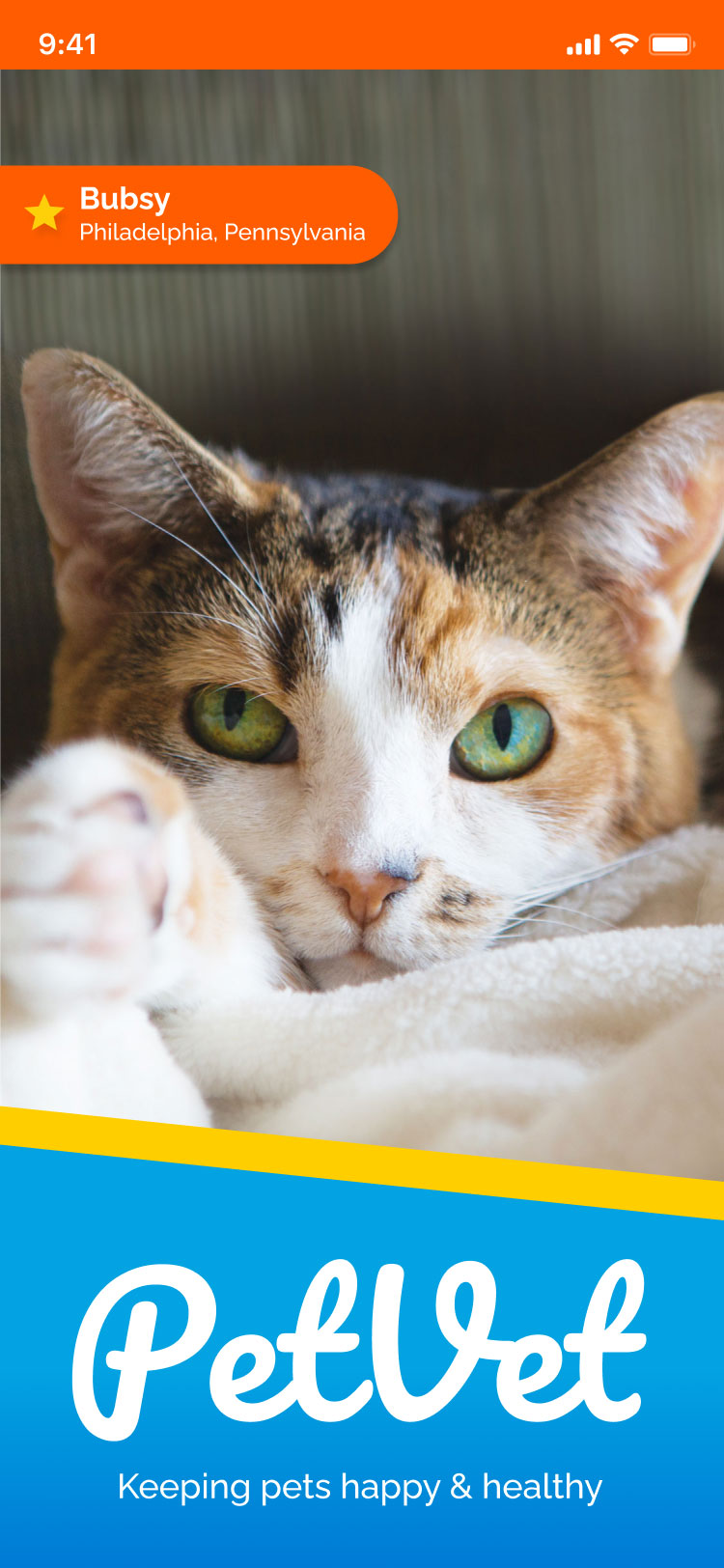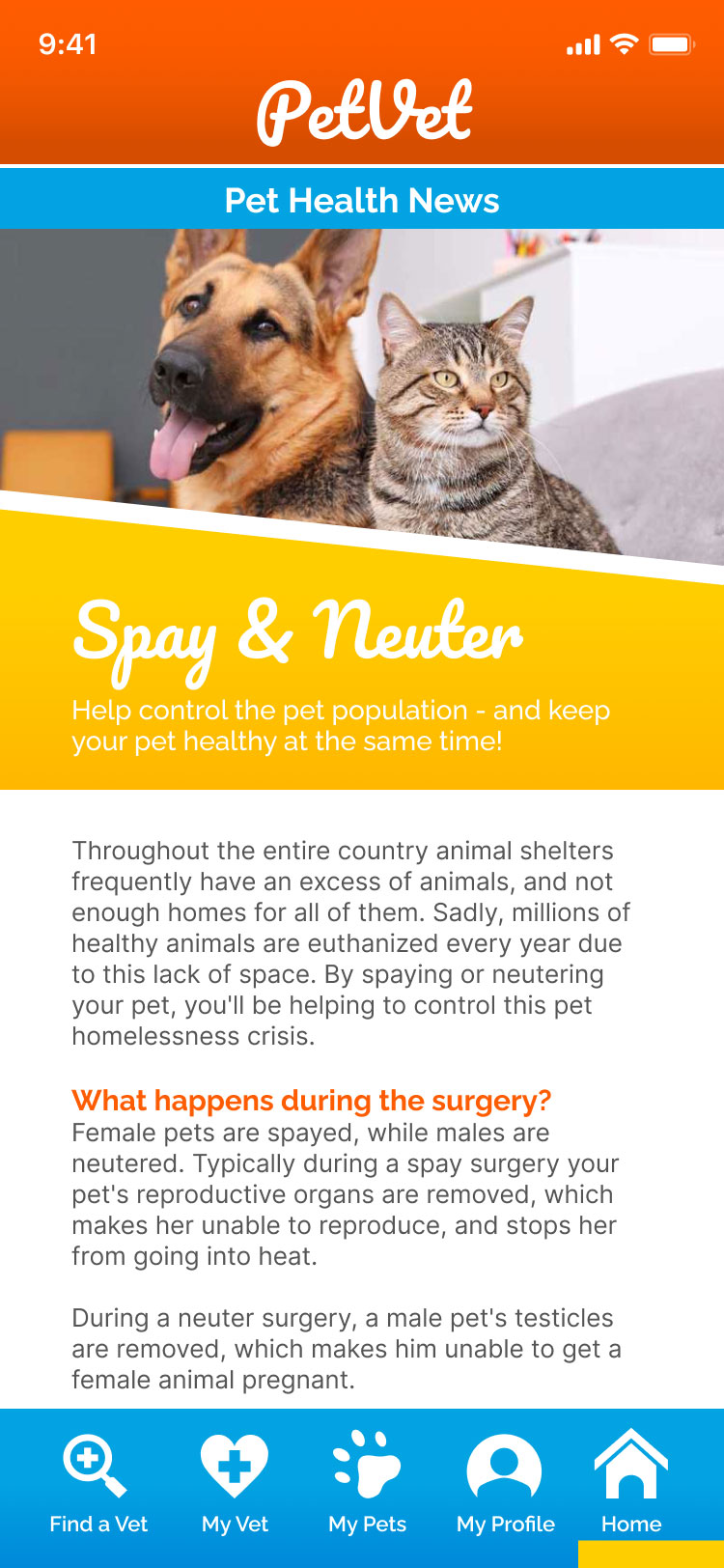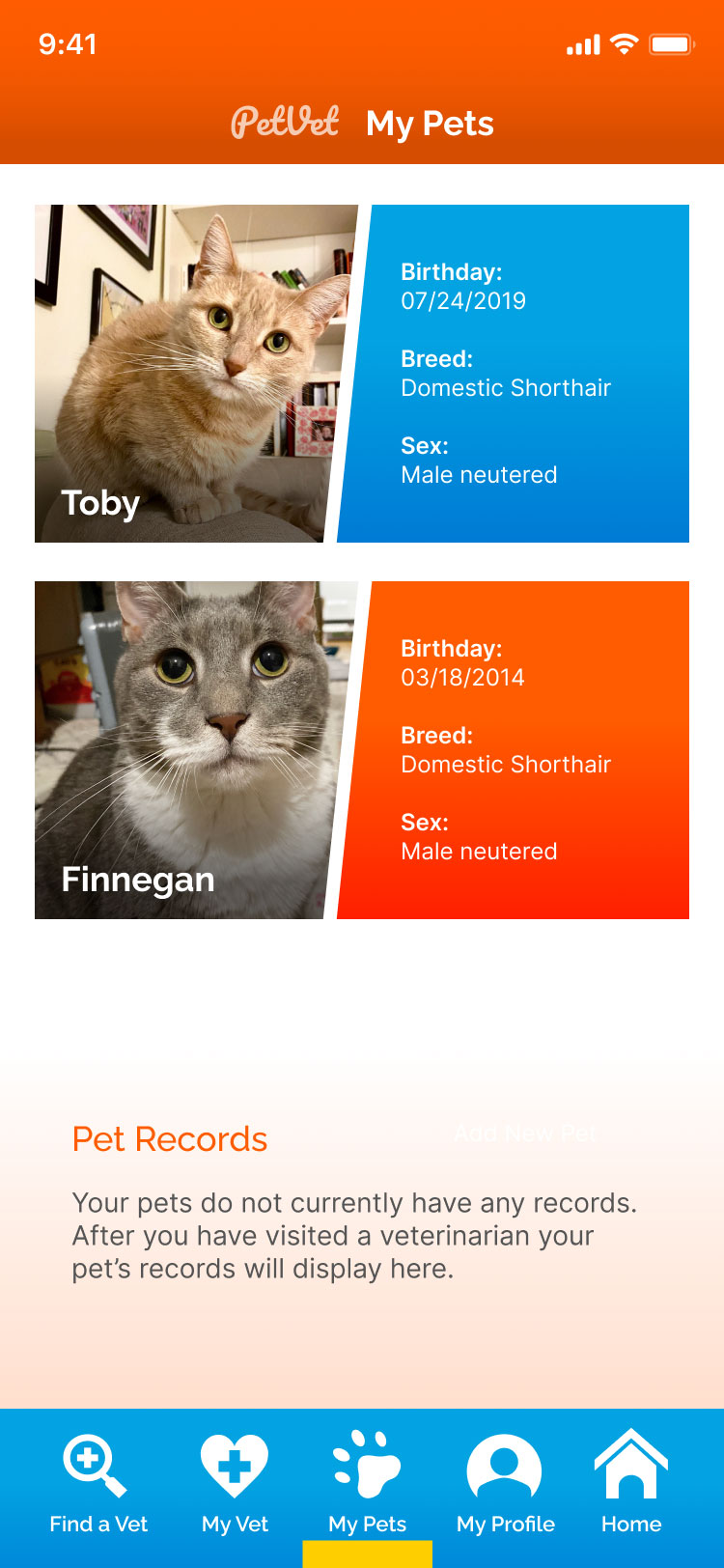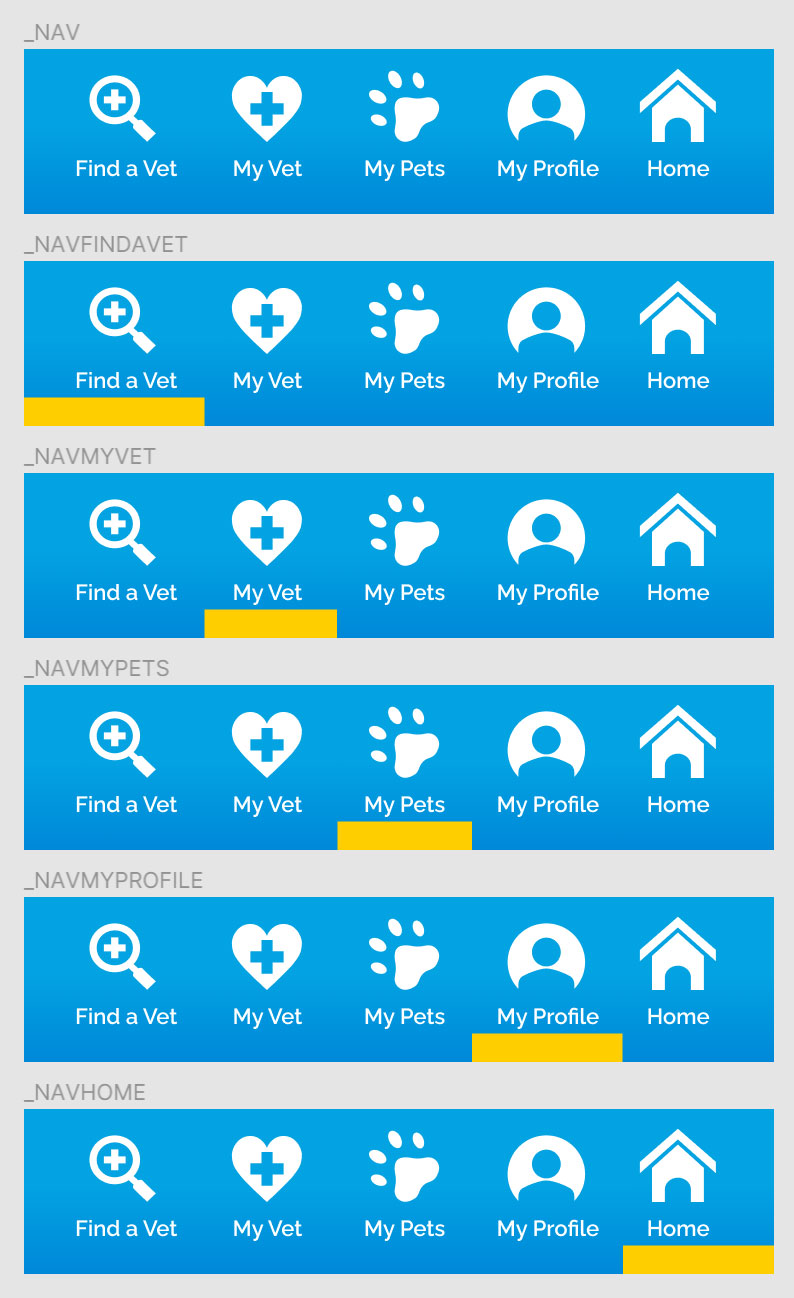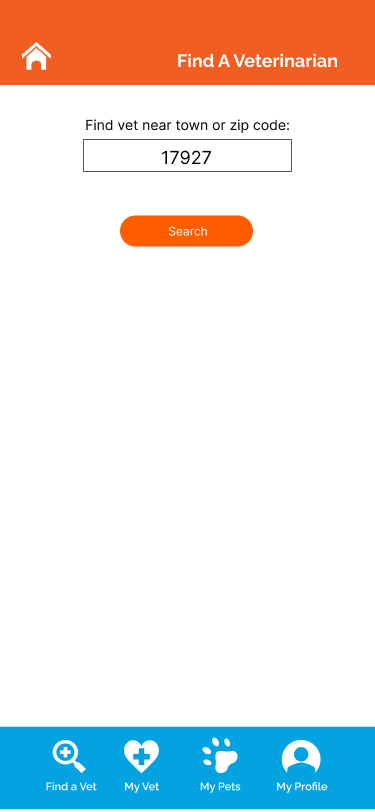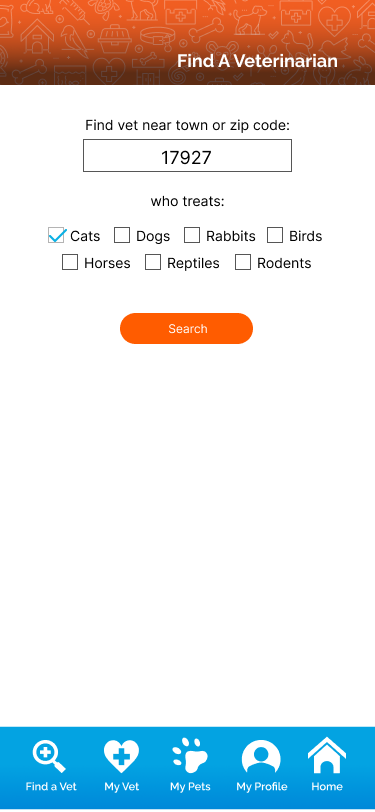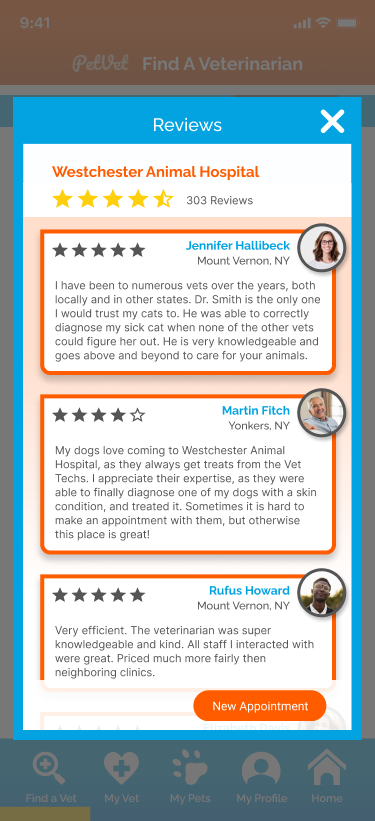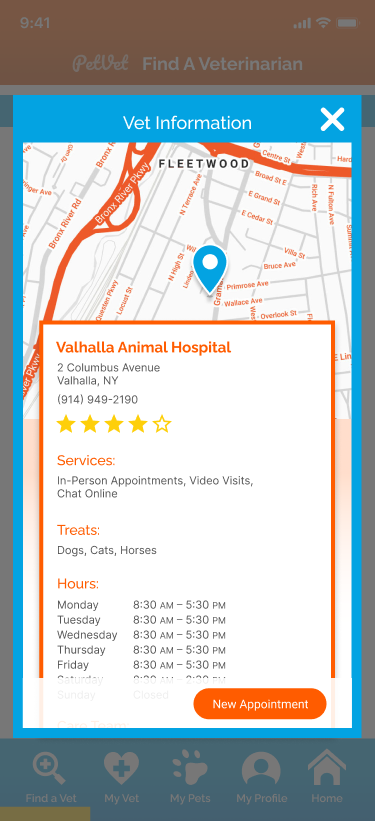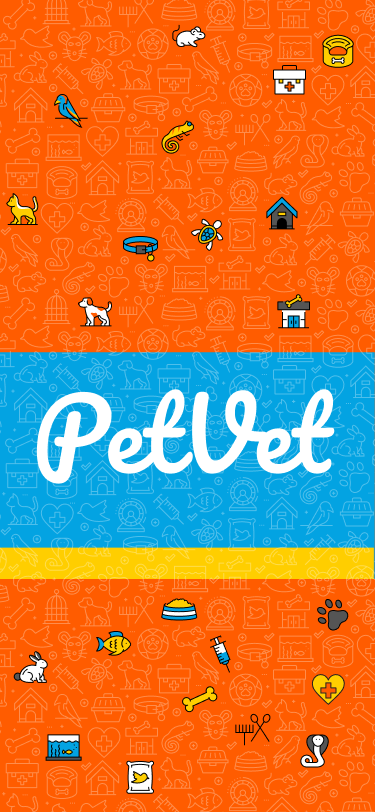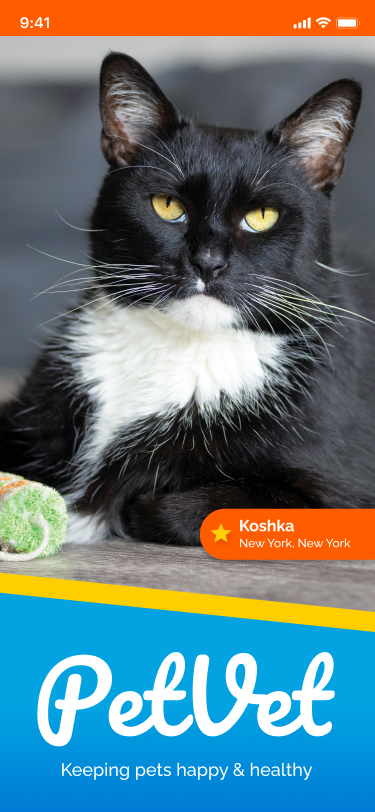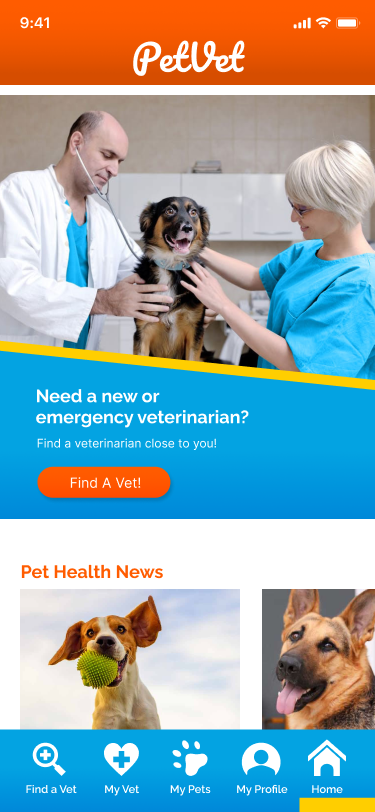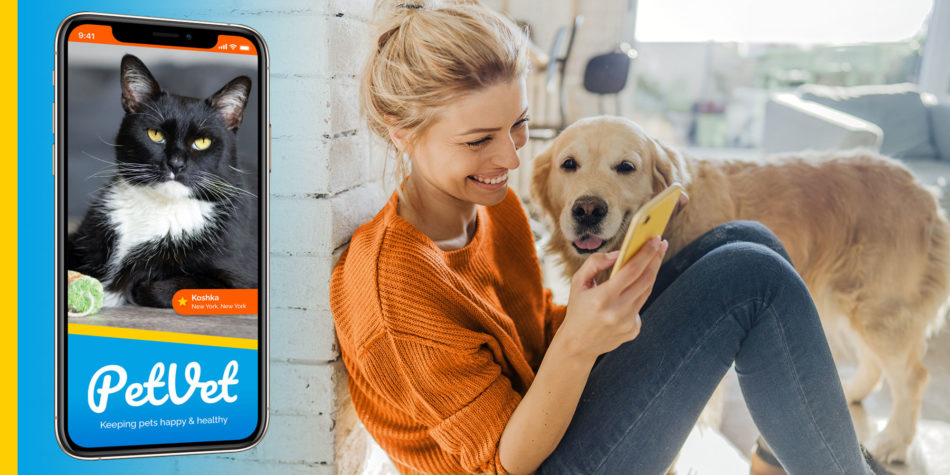
- Many users would prefer to set up appointments with their veterinarians using an app, as opposed to having to call the office. Beyond convenience, this also aids users who may have disabilities or difficulty using the telephone.
- Some pet owners would opt for video visits if their concern was minor, as opposed to stressing out their pet by bringing it into the animal hospital.
Low Fidelity Prototype
The low fidelity prototype highlights the user flow of finding and booking a veterinarian. This prototype was used for the first usability study.
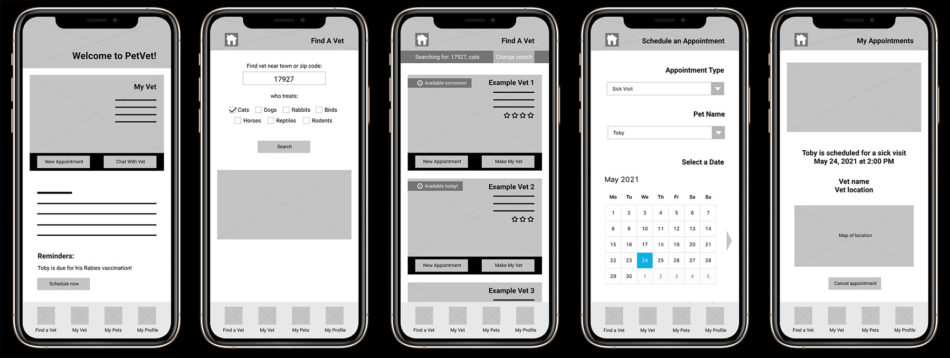
- Many users had difficulties with the scrolling functionality, with some not even realizing that it existed, so our goal was to improve this feature. It is worth noting that this may have been a symptom of testing the mobile app on a desktop computer, and would have been more readily apparent on a phone.
- The ratings and availability information were useful to users when selecting a veterinarian, so they will be expanded and made more prominent. Users wanted to see more than just a star rating, but full reviews to provide better context.
- Users also felt some information, like phone numbers, felt missing, so they will be added. There was also some minor confusion about the navigation, so it will be consolidated and made more visually appealing.
- Users with exotic pets also wanted to search by animal type, so this filter will be added to the search functionality.
Mockups: Incorporating Findings From the Usability Study
Because finding a well rated veterinarian to take care of their pet was very important to users, we created a way to see full length reviews, and not just a general star rating.
Some users felt that some information like phone number was missing, so we made sure that all relevant info, like phone, services, types of animals treated, hours, and a map were all included!
High Fidelity Prototype: An Updated Look
After a second round of usability testing, I opted to update the interface of the app to give it a more fresh, modern appearance.
Instead of the “sketchy” drawing type look, the new design has more prominent photography, including some of my own images.
High Fidelity Prototype: Selected Screens
